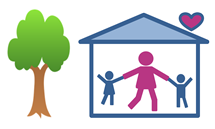
Southgate Medallion Tribute
Welcome to our March Newsletter Volume 47, Issue 3
Coordinator Corner
As we are approaching the end of our fiscal year, I would like to remind you that if you are planning to apply for any PD Funding for any approved courses, workshops and conferences you have attended between April 1st 2022 to March 31st 2023, you will need to send your requests to your consultant as soon as possible. The funding office will not accept late submissions.
*Please get your funding requests to your consultant by Friday March 24th 4.30 pm to give me time to get the forms checked, get back to you with any changes or questions I may have, and to have them processed correctly.
FAQ’s About PD Funding
· Why does it take so long to get my money?
The whole process takes time. Before I send off the forms to the funding office, I have to be 100% certain that I am sending them with all of the correct information. Then the funding office has to approve the course/workshop/conference that you have been applying for. Once the agency has received the approval, it then can take time for the funds to be released to the Agency. The Agency won’t pay you until we have received the funding. The Agency also doesn’t withhold money from you.
· Are Core Trainings and Agency Workshops approved for funding?
No
· What is approved for PD Funding?
The Flight courses – PfP, SCP and Flight qualify for PD Funding.
Post secondary certificate and diploma courses through recognized institutions qualify.
If you are unsure, you can contact the funding office and ask them directly at Cs.childcarefunding@gov.ab.ca
· What am I entitled to receive?
Each fiscal year (1st April to March 31st) you are entitled to receive the following:
Post Secondary
- $1500 for courses and text books for post secondary courses
- $800 x 2 release time funding for post secondary courses
Workshops and Conferences
- $500 for workshops and conference
- $17.50 p/h up to 45 hours release time funding
Flight Courses
Release Time for successful completion of FLIGHT curriculum training:
• Entry Level training “Possibilities for Practice” Learning Series available through ARCQE
Eligible for up to 12 hours of release time.
• Intermediate Level online course “Supporting Curriculum Practice” available through ARCQE
Eligible for up to 45 hours of release time.
• Advanced Level Course “The Flight: Alberta’s Early Learning and Care Framework” provided through Grant MacEwan University
Eligible for up to an equivalency of two 3-credit courses of post-secondary release time.
Good to know
· I require a receipt for all courses/workshops/conferences that you have paid for
· Once you have attended your course/workshop/conference, please send a copy of your certificate to your consultant
· Applications for post secondary courses require the following information:
Course Numbers – I cannot apply for the course as a whole, but have to apply for individual modules, so I require the module number and name
Receipts
Proof of enrollment
· I cannot process PD Funding applications for any of the Flight courses (PfP, SCP and Grant Macewan Flight) until you have completed it and have received your certificate.
· For those of you who have your Level 3 and are wondering what you can do for professional development, the funding office will accept applications for post secondary courses relating to skill development such as leadership, accounting. Reach out to them for confirmation that the course you are interested in taking is eligible.
For a copy of the funding guide please go to:
https://www.alberta.ca/alberta-child-care-grant-funding-program.aspx#jumplinks-0
Thank you
Emma Dajavs
Coordinator
HAPPY PERSIAN NEW YEAR!
Pasta Salad
Ingredients:
· Pasta noodles (Chickpea or lentil noodles for more protein)
· Cubed cheese
· Bell pepper
· Cucumber
· Onion
· Tomato
· Carrots
· Snap peas
· (Cubed Chicken optional)
· Italian Dressing
Directions:
1. Cook pasta noodles, run under cold water to cool off.
2. Cut up cheese, veggies and chicken.
3. Mix everything together in a bowl.
4. Top with Italian dressing and mix in, to taste.
Ramp and path by Anupama Naragoda
Naming
The children are completing play and playfulness holistic play based goals because they are doing playful exploration and problem solving by increasing airtime of the ribbon cone using the slide and the train.
Dispositions :
Seeking : E is wondering and questioning how he could roll the ribbon cone further
Problem Solving: A is solving problems by putting the train under the slide to elevate it so that the ribbon cone can roll further.
Participating : Engaging with others, while trying to find different solutions and exploring possible outcomes. They participate by taking turns and observing. Both use different strategies, like moving the train to different positions under the slide, adjusting how hard they push the ribbon cone, etc.
Persisting : Continuing through challenges and difficulties, asking for help, they are moving materials from one place to others. Elias is using his resources and asking help from Andrea to solve the problem.
Nurturing
On the second day, I set up another provocation by using empty towel rolls, and toilet paper roll. I gave them some pine cones and marbles and kept a paper cup and two containers underneath the rolls. A picked up the marble and put them in to one hole. She said, “look E, it came from here.” Then E put a pom pom into the a hole, but it did not fall into the container with pom poms in it. He seeked help from A, as he was confused on which roll he should put the pom pom in, in order to have it reach the right container. A showed him which hole, and demonstrated by putting a pom pom in it, and it went in the right container. E proceeded
to do the same, and was satisfied. When we went on a nature walk A and E climbed on a snow pile. A said, “Look E, lets climb the mountain.” They climbed on the
mountain and tried to move down by sliding, and A said, “It is hard to move I am stuck.” E said, “Do like this A,” and started pushing himself down by using his arms to push himself forwards. A followed his actions. They did for few minutes and came back. The next day they wanted to go again. They did the same thing, and then on the third day they went to the snow pile, and instead of sliding down without using hands they made a small ramp in the snow, so they could slide more easily.
Importance of visuals
We as adults all rely on visual helpers every day. We use calendars, day timers, street signs, grocery lists, maps, and so on. Using visual cues in our environment allows us to plan, organize, and most of all be independent. Visuals are equally important to children because they are just beginning to learn how things work in the world.
Why do visual supports make it easier for children to understand and communicate?
Words “disappear” right after we say them, visuals hold time and space.
Visuals direct attention to them and hold attention.
Visuals allow more time to process the information.
Visuals assist in remembering.
Using the same words every time a visual is shown, teaches your child those words.
Anything we see that helps us with communication by giving us information with our eyes is a visual support. The type of visual that works best with each individual child depends on what is meaningful to the child. The most widely recommended visuals are those that are used to provide children with information.
For example, labels placed around the home or classroom help to inform your child where to find and where to put materials. Rules provide your child with clear expectations. Other types of visuals that give information in a logical, structured, and sequential form consist of schedules, mini-schedules, and “first/then” boards. Activity choice boards allow your child to make selections during their play.
The previously named visuals can be presented in several formats, depending on your child’s level of understanding. Ranging from most concrete to most abstract, possible visuals are:
- Objects – this would be considered the first level of visual representations and would include the actual objects (e.g., for some children, seeing a sandwich in their parent’s/teacher’s hand tells them “it’s time for lunch.”)
- Color photographs – this would consist of colored photographs of the concrete objects (e.g., for some children being shown a photograph of a bus means “we’re going to daycare” OR “we’re going home”)
- Black and white photographs – this level would consist of the same photographs but in black and white
- Color line drawings – these are picture symbols that are often used with children who are able to understand at this level of abstraction
- Black and white line drawings – these are also picture symbols and serve the same purpose as colored lined drawings
- Miniature objects – these are smaller versions of the objects
https://connectability.ca/2010/09/23/using-visuals
If you are interested interested in creating visuals in create an inclusive environment, click on the link below for printer friendly versions on problem solving, daily schedules, behavior expectations and more!
Core Training Dates
Thursday March 9th – 6.30 to 8.30 Business, Ethics and Professionalism.
Upcoming Agency-Led Workshop
FEEDING YOUR DAY HOME CHILDREN ON A BUDGET
SATURDAY MARCH 25TH 9 am to 11 am
Bring a favourite inexpensive Lunch Recipe to share
Time will be given to swap recipes and money-saving tips








